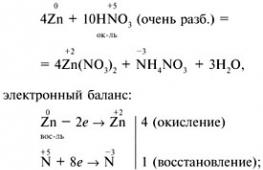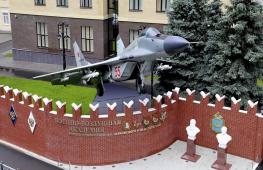Plains on the map of the hemispheres with names. What plains are there in Russia
Earth's surface. On land, plains occupy about 20% of the area, the most extensive of them are confined to and. All plains are characterized by small fluctuations in elevation and slight slopes (slopes reach 5 °). According to the absolute height, the following plains are distinguished: lowlands - from 0 to 200 m (Amazonian);
- elevations - from 200 to 500 m above ocean level (Central Russian);
- upland, or plateaus - over 500 m above ocean level ();
- Plains lying below ocean level are called depressions (Caspian).
According to the general nature of the surface of the plain, there are horizontal, convex, concave, flat, hilly.
According to the origin of the plains, the following types are distinguished:
- marine accumulative(cm. ). Such, for example, is the lowland with its sedimentary cover of young marine strata;
- continental accumulative. They were formed as follows: at the foot of the mountains, the products of destruction carried out from them by water flows are deposited. Such plains have a slight slope to sea level. These most often include marginal lowlands;
- river accumulative. They are formed due to the deposition and accumulation of loose rocks brought ();
- abrasion plains(see Abrasion). They arose as a result of the destruction of the coast by the activity of the sea. These plains arise the faster, the weaker the rocks and the more often the unrest;
- structural plains. They have a very complex origin. In the distant past they were mountainous countries. Over the course of millions of years, the mountains were destroyed by external forces, sometimes to the stage of almost plains (peneplains), then as a result, cracks and faults arose, along which it poured out to the surface; she, like armor, covered the former unevenness of the relief, her own surface was preserved even or stepped as a result of the outpouring of traps. These are the structural plains.
The surface of the plains, which receive sufficient moisture, is dissected by river valleys, dotted with complex systems of gullies and.
The study of the origin of the plains and the modern forms of their surface is very important. economic importance, since the plains are densely populated and developed by man. They have many settlements, a dense network of communications, large and land. Therefore, it is precisely with the plains that one has to deal with when developing new territories, designing the construction of settlements, communication lines, and industrial enterprises. As a result economic activity The relief of the plains can change significantly for humans: ravines are filled up, embankments are built, quarries are formed during open-cast mining, and near the mines, hills created by man from waste rock - waste heaps grow.
The change in the relief of the ocean plains is affected by:
- , eruptions , faults earth's crust. The irregularities created by them are transformed by external processes. Sedimentary rocks, settling to the bottom, level it. Most accumulates at the foot of the continental slope. In the central parts of the ocean, however, this process occurs slowly: a layer of 1 mm is created in a thousand years;
- natural currents that erode and transport loose rocks sometimes form underwater dunes.
The largest plains on earth
The Amazonian lowland is the most extensive plain in the world, covering an area of more than 5 million km2. It rises above sea level to a height of 10-120 m. The entire surface of the plain is occupied by equatorial humid forests - hylaea. Vast expanses of lowland are connected with the life of the great Amazon River, the largest in the world in terms of catchment area. Part of the territory near the floodplain of the river is constantly flooded, forming swampy areas, the so-called marches, and near the mouth of the river, tidal waves influence the relief of the plain Atlantic Ocean. Their action is associated with the amazing phenomenon of "vice" when, at high tide, the ocean's water shaft rises so high that it enters the mouth of the Amazon in the form of a large wave that turns the waters of the river back.
The Gobi plain is the largest in Central Asia. It owes its name to the desert of the same name. The plain is located in an intramountain basin. In the Gobi there are denudation and accumulative areas, and rocky surfaces - hammads, and real "eolian cities" created by winds in sedimentary rocks. Due to its elevated position relative to sea level (more than 1000 m), the Gobi is also called a plateau. Clamped on all sides by high mountains, the inner Gobi plain is characterized by a harsh climate.
The Great Plains is a foothill plateau in North America, descending in wide steps from the Rocky Mountains to the Central Plains of America. The higher step starts from the foot of the Rocky Mountains. It is called the Great Prairies. This is a stratified sloping plain composed of pliable sedimentary rocks, which are strongly destroyed by denudation. The surface of the prairies is often pitted with ravines. To the east, the Great Plains merge into the lower Central Plains. Their surface in the north is covered by glacial deposits and loess.
The Mesopotamian lowlands, while not the most extensive, are by far the best known. This is a flat accumulative plain, composed of deposits of two great rivers of the East - the Tigris and the Euphrates. The famous civilization of Mesopotamia arose here.
The West Siberian Lowland is a former bay of the Arctic Ocean. The lowland is distinguished by many lakes and a dense river network. Huge areas of lowland are swamped. The absolute heights of the lowlands above sea level are only a few tens of meters. The richest oil and gas fields in Russia are concentrated here.
The Sahara is the largest desert in the world and is located in North Africa. The area of the Sahara is about 8 million km2, which is comparable to the size of the continent of Australia. Surfaces 200-500 m high - a vast expanse of aeolian plains (Libyan desert, Great Western and Great Eastern Erg), lake basins (Lake Chad basin), plateaus, with a few insular mountain ranges - highlands (Ahaggar, Tibesti, Darfur). In some places, these plains are cut by wide valleys - wadis (as the Arabs call dry riverbeds).
The East European (Russian) Plain extends west of the Ural Mountains and lies within the East European Platform. The intrusion of the ice sheet during the last ice age had a significant impact on the appearance of the northern half of the plain. On the plain there are deposits of many minerals, the largest of which is the Kursk magnetic anomaly.
The Western European lowland plains are framed by a wide border north coast Western Europe. These include the North German, Polish, Flanders lowlands. By origin, these are glacial and alluvial sea plains, on the territory of which there are many lakes in places (in Poland, for example, areas with a large number of lakes are called "lakes"). The lands of Holland lying within the Flanders Lowland often have marks below sea level. To protect these areas from floods, people built dams. Now these lands (polders) are used for farms and pastures.
The Russian Federation occupies a vast territory. Due to the impressive area, the country's relief is very diverse. The rivers, plains and mountains of Russia constitute a unique natural system that reflects the entire identity of the Eurasian continent.
Plains of Russia
Plains are areas of land with a flat or hilly surface, in which elevation fluctuations will be very small. main feature all plains - a relatively flat relief. But in fact, it is more diverse: in some places, parts of the plains are really flat, in others - hilly.
On a physical map, the plains are marked in green with varying degrees of saturation. So, the lighter the green color, the higher the flat area above sea level is located. Dark green color indicates lowlands.

Rice. 1. Plains on the physical map.
Plains dominate in Russia: they occupy about 70% of the country's territory. In the Russian Federation, there are three largest plains:
- East European or Russian Plain . It is located to the west of the Ural Mountains and occupies more than 4 million square meters. km. Its surface does not have an ideally even relief, since it consists of lowlands, uplands and hilly areas. Such plains are called hilly.
- West Siberian Plain . It is located to the east of the Ural Mountains and occupies 2.5 million square meters. km. This is one of the lowest plains in the world. Her distinguishing feature- almost perfectly smooth surface. Such plains are called flat. Only occasionally there are small hills, not exceeding 300 m in height.
- Central Siberian Plateau . It is located to the east of the West Siberian Plain and occupies about 3 million square meters. km. A plateau is a flat area of land that lies high above sea level. The plateau has much in common with the highlands, but only near the mountains their peaks are "cut off".

Rice. 2. Central Siberian Plateau
Mountains of Russia
On the territory of Russia, mountains are located in the southern and eastern parts. The mountains were formed in ancient times: hundreds of thousands of years ago, when there were active displacements of the earth's crust.
Mountains are young and old. Young mountains continue to "grow" up. As a rule, they are very tall, with sharp peaks. They often contain active volcanoes. The ancient mountains are relatively low, gently sloping, which have been exposed to the destructive effects of wind and melt water for many years.
In Russia, there are both young and old mountains:
TOP 4 articleswho read along with this
- Ural mountains . One of the most ancient, formed more than 300 million years ago. Stretching from north to south throughout the country, they separate the European part of Russia from the Asian. The height of the Ural Mountains is very modest: their highest point is Mount Narodnaya (1895 m). They are very rich in minerals, among which precious stones and gems are of particular value.
- . These are the highest and youngest mountains. Formed about 25 million years ago. They are divided into two mountain systems: the Lesser and Greater Caucasus. highest point- Mount Elbrus (5642 m). Almost all the peaks of the Caucasus Mountains are covered with eternal snow, which attracts climbers and ski lovers.

Rice. 3. Caucasus mountains.
- Altai and Sayans . Young and high mountains, formed in the south of Siberia. The most high peak Altai Mountains - Belukha Peak (4506 m). They have a unique ecosystem and are included in the World Natural Heritage List.
- Mountains of Kamchatka . These are young mountains, among which there are more than 140 volcanoes, of which 28 are active. The highest and at the same time active volcano in Kamchatka is Klyuchevaya Sopka (4750 m).
What have we learned?
When studying the topic "Mountains and Plains of Russia" under the program of the surrounding world (Grade 4), we learned what are the features of the relief of our country. We found out that plains prevail on the territory of the Russian Federation, but there are also young and ancient mountain systems.
Topic quiz
Report Evaluation
Average rating: 4.3. Total ratings received: 405.
| Mainland | Plain | The country |
| Eurasia | Great Chinese | China |
| Eastern European | RF, Ukraine, Belarus, Moldova. | |
| Deccan Plateau | India | |
| Dzungarian lowland | China | |
| West Siberian Lowland | RF | |
| Indo-Gangetic lowland | India, Pakistan, Bangladesh | |
| Mesopotamian lowland | Iraq, Iran, Syria, Kuwait. | |
| Caspian lowland | RF, Kazakhstan | |
| Central Siberian Plateau | RF | |
| Tarim (Kashgar) | China | |
| Turan lowland | Uzbekistan, Kyrgyzstan, Tajikistan, Turkmenistan, Kazakhstan | |
| Africa | East African Plateau | Kenya, Uganda, Rwanda, Burundi, Tanzania, Zambia, Malawi, Somalia, Djibouti, Eritrea, Ethiopia. |
| South America | Guiana Plateau | Venezuela, Brazil, Guyana, Suriname, Guyana |
| brazilian plateau | Brazil | |
| Amazonian lowland | Brazil, Colombia, Ecuador, Peru | |
| North America | Mississippi lowland | USA |
| Atlantic lowlands | USA | |
| Mexican lowland | USA | |
| great plains | USA, Canada | |
| Central Plains | USA, Canada |
The relief of the bottom of the oceans
The following parts are distinguished in the bottom topography:
1. Shelf(mainland shoal) - the underwater margin of the mainland, adjacent to the coast of the land. Shelf width up to 1500 km, depth from 50 - 100 to 200 m (2000 m South Kuril basin Sea of Okhotsk), makes up 8% of the world's oceans. The shelf is the most productive part of the world's oceans, where there are fishing areas (90% of seafood) and the largest mineral deposits.
2. continental slope lies below the shelf boundary at a depth of up to 2000 m (sometimes up to 3600 m), makes up 12% of the area of the world's oceans. This part of the bottom is characterized by seismicity.
3. Bed The world ocean is located at a depth of 2500 to 6000 m, it occupies up to 80% of the area of the world ocean. The productivity of this part of the ocean is low. The bed has a complex relief. Examples of these forms are:
a) mid-ocean ridges (Mid-Atlantic ridge, Central Indian with Arabian-Indian, Gakkel ridge), which arose as a result of movement lithospheric plates. The tops of the mid-ocean ridges that come to the surface form islands (Iceland, St. Helena, Easter Islands);
b) deep-water trenches - narrow depressions with steep slopes (Table 6).
The bottom of the world ocean is covered with marine sediments, which cover 75% of the ocean floor and their thickness reaches up to 200 m.
Table 6
Deep sea trenches
Now many experts are studying the largest plains in the world. These plains amaze with their extraordinary beauty. Not many people know where the largest plains on Earth are located. And every Russian will not be able to name the largest plains of Russia.
A plain is a type of terrain that is most often characterized by small fluctuations in elevation. Plains can be subdivided into lowlands, uplands and plateaus. The plain-lowland is located at a distance of up to 200 meters above sea level. The hills are at a distance of more than 500 meters above sea level, and the plains that are between these two distances will be called plateaus.
The largest plain in terms of area is the Amazonian lowland. It has an area of more than 5 million square kilometers and this plain is located 10-100 meters above sea level. The Amazonian lowland is located in South America and stretches from the Atlantic Ocean to the largest river in the Amazon. Throughout the area of this largest plain in the world, moist equatorial forests grow. 
The second longest plain on Earth is the Gobi. The Gobi Desert is located in Central Asia and is a plateau, as there are mountain ranges on all its sides. On the territory of this plain there are also rocky surfaces, as well as surfaces where plants grow. These plants can only be found here. And all because the desert has a harsh climate. This plain is located at an altitude of about 1000 meters above sea level.
Another largest plain in the world is the Sahara Desert. The desert has an area of 8 million square kilometers and there are several plains on its territory. This desert can cover the entire mainland of Australia. Plains in the desert are crossed by riverbeds. In Africa, the largest plain is the East African Plateau. It has a length of 17,000 kilometers in length. 

The largest plain in Russia is the West Siberian Lowland. This is a former basin of the Arctic Ocean, so there are a large number of rivers and lakes on its territory. The plain is at the level of 10-12 meters. It is worth noting that all the most famous oil and gas fields that exist in Russia are located on this plain. The largest plains of Russia, the list goes on. Another plain is the East European, which also has the name "Russian". The plain is located near the Ural Mountains. It also has the richest mineral deposits on its territory. The largest of them is the Kursk magnetic anomaly.
Almost all continents have the largest plains. They all deserve the attention of researchers. Many of them attract tourists with their beauty, who themselves want to see the majestic plains of the world. Therefore, tourist routes are laid through many famous plains.



